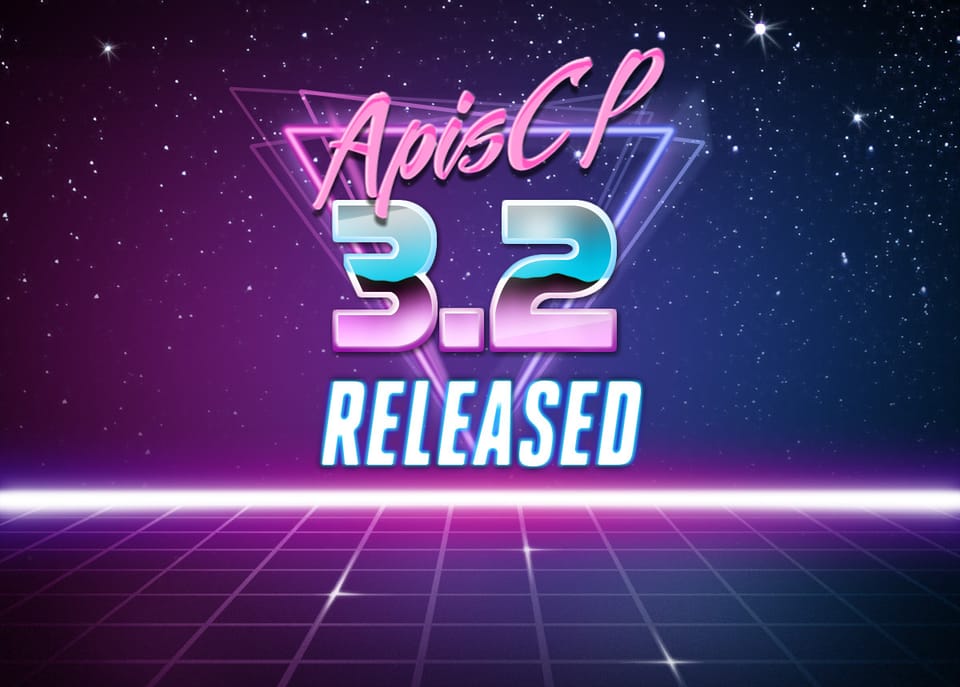Service overrides
Customizing services in apnscp. A quick guide for tweaking Apache, MySQL, PHP, rspamd, even the panel itself.

apnscp provides a variety of means to customize your environment. Each service is different and the means to configure it varies. Many services have files that are verboten, don't touch under any circumstance. They are periodically overwritten and the primary means to ensure what you run is what is developed.
Apache
⚠️ DO NOT TOUCH: /etc/httpd/conf/httpd.conf
Customization file: /etc/httpd/conf/httpd-custom.conf
Additionally, module configuration may be inserted in /etc/httpd/conf.d to load or modify existing modules. Per-site configuration is located in /etc/httpd/conf.d/siteXX or /etc/httpd/conf.d/siteXX.ssl for SSL-specific context. By convention customizations are placed in a file named custom in these directories. To get the site ID of a domain use the helper command, get_site_id.
After making changes, htrebuild will compile Apache's modular configuration followed by systemctl reload httpd to reload the web server.
apnscp
⚠️ DO NOT TOUCH: /usr/local/apnscp/config/*
Customization file: /usr/local/apnscp/config/custom/*
apnscp supports overriding views, apps, modules, and configuration.
View overrides
All views may be copied into config/custom/resources/views/<path> from resources/views/<path>. Custom views take precedence, including all mail templates. Overriding layout.blade.php allows customization to the skeleton of all apps in apnscp.
Layout
A master layout named "layout" is provided in resources/views/. As with all templates suffixed "blade.php", it utilizes Blade. A theme-specific blade may override the master layout by creating an eponymous template in config/custom/resources/views/. For example, to override the "apnscp" theme, create a file named config/custom/resources/views/apnscp.blade.php. Inheritance is supported via @extends("layout") in addition to section injection.
App overrides
Copy the app from apps/<name> to config/custom/apps/<name>. Role menus, i.e. what is loaded when a corresponding user type logs in (admin, site, user) may be overridden as well. Menus are based on code under lib/html/templateconfig-<role>.php. Additional includes may be located under config/custom/templates/<role>.php. This is a sample extension for apnscp when a billing module is configured to allow clients direct access to manage billing:
config/custom/templates/site.php:
<?php
$templateClass->create_link(
'Billing History',
'/apps/billinghistory',
cmd('billing_configured'),
null,
'account'
);
$templateClass->create_link(
'Change Billing',
'/apps/changebilling',
cmd('billing_configured'),
null,
'account'
);
$templateClass->create_link(
'Client Referrals',
'/apps/referrals',
cmd('billing_configured'),
null,
'account'
);
Hiding/removing existing apps
Apps populated as part of apnscp may be hidden or removed from view using hide() and remove() respectively. Application ID is the basename from the URI path, i.e. for /apps/foo the application ID is "foo" and likewise "quuz" is the application ID for /apps/quuz.
config/custom/templates/admin.php:
<?php
// remove Nexus app from admin
$templateClass->getApplicationFromId('nexus')->remove();
// allow Dashboard access, but remove from side menu
$templateClass->getApplicationFromId('dashboard')->hide();
App view overrides
Any app that uses Blade templates (views/ directory) is eligible to override components of the template structure. Create the same structure in config/custom/apps/<name> as is in apps/<name>. For example to override apps/ssl/views/partials/certificate-detected.blade.php, copy that file to config/custom/apps/ssl/views/partials/certificate-detected.blade.php. apnscp will load the view from this location first. It is advisable to copy the entire application over (App overrides) as application structure may change between releases.
Global constants
Constants may be overrode or added to global scope via config/custom/constants.php:
<?php
return [
'BILLING_HOST_READ' => $dbyaml['billing']['read']['host'],
'BILLING_HOST_WRITE' => $dbyaml['billing']['write']['host'],
'BILLING_USER' => $dbyaml['billing']['read']['user'],
'BILLING_PASSWORD' => $dbyaml['billing']['read']['password'],
'BILLING_DB' => $dbyaml['billing']['read']['database'],
'BILLING_HOST_BACKUP' => $dbyaml['billing']['backup']['host'],
];
DNS template overrides
DNS is generated from a base template in resources/templates/dns. Presently mail and dns templates are supported. For each template to override copy the respective template to config/custom/resources/templates/dns/. Validate DNS template consistency via cpcmd dns:validate-template TEMPLATENAME.
Themes
New themes may be created and placed under public/css/themes and public/images/themes. The default theme may be changed with cpcmd:
cpcmd config_set apnscp.config style theme newtheme
Per theme layouts may be set following the layout override mentioned above.
apnscp configuration
All configuration must be made to config/custom/config.ini. cpcmd provides a short-hand tool to edit this file.
# Show all configuration
cpcmd config_get apnscp.config
# Set configuration
cpcmd config_set apnscp.config core fast_init true
Refer to config.ini that ships with apnscp for a list of configurables.
HTTP configuration
All changes may be made to /usr/local/apnscp/config/httpd-custom.conf. After changing, restart apnscp, systemctl restart apnscp
Dovecot
⚠️ DO NOT TOUCH: /etc/dovecot/conf.d/apnscp.conf
Customization file: /etc/dovecot/local.conf
A few conflicting files in /etc/dovecot/conf.d are wiped as part of Bootstrapper. These files will always be removed if found:
- 10-auth.conf
- 10-mail.conf
Postfix
⚠️ DO NOT TOUCH: /etc/postfix/master.conf
Customization file: /etc/postfix/main.cf
Postfix does not provide a robust interface to extend its configuration. /etc/postfix/master.cf, which is the service definition for Postfix, may not be updated as it is replaced with package updates.
Pay special adherence to configuration variables in Bootstrapper. These are always overwritten during integrity check. To override these variables, create a special variable named postfix_custom_config in /root/apnscp-vars-runtime.yml. This is a dict that accepts any number of Postfix directives that takes precedence.
Sample
postfix_custom_config:
disable_vrfy_command: no
vmaildrop_destination_rate_delay: 15
MySQL
⚠️ DO NOT TOUCH: /etc/my.cnf.d/apnscp.conf
Customization file: /etc/my.cnf.d/*
PostgreSQL
⚠️ DO NOT TOUCH: n/a
Customization file: /var/lib/pgsql/
PHP
⚠️ DO NOT TOUCH: /etc/php.ini (managed block)
Customization file: /etc/phpXX.d/*
apnscp uses a managed block in /etc/php.ini. Any directives within this block will always be overwritten. To override any values within this block, make changes in /etc/phpXX.d/ where XX is the version major/minor of PHP. Note this affects global PHP settings. To change settings per site look into php_value in either .htaccess or siteXX/custom mentioned above in Apache.
rspamd
⚠️ DO NOT TOUCH: /etc/rspamd/local.d/*
Customization file: /etc/rspamd/override.d/*
For each file in local.d to override create a corresponding file in override.d/. This follows either UCL or JSON. When working with JSON, drop the leading + closing braces ("{", "}"). This is due to a parsing quirk of rspamd. An example of reconstituting to valid JSON is available in the Github repository.
Additionally rspamd Playbook variables may be overrode in a similar manner to Postfix. In /root/apnscp-vars.yml add:
rspamd_neural_custom_config:
enabled: false
rspamd_actions_custom_config:
add_header: 20
rspamd provides many configurables that don't require a direct override. Neural module for example is also conditionally enabled using rspamd_enable_neural_training. Be sure to refer back to defaults in mail/rspamd.
SpamAssassin
⚠️ DO NOT TOUCH: n/a
Customization file: /etc/mail/spamassassin/local.cf
SSH
⚠️ DO NOT TOUCH: Managed block in /etc/ssh/sshd_config (# BEGIN/# END)
Customization file: /etc/ssh/sshd_config
sshd_config may be modified. Do not edit the directives within # BEGIN APNSCP MANAGED BLOCK and # END APNSCP MANAGED BLOCK. Port and public key authentication may be modified with Scopes,
# Enable ssh daemon ports 22 and 58712
cpcmd config:set system.sshd-port '[58712,22]'
# Disallow password-based logins, public key only
cpcmd config:set system.sshd-pubkey-only true




